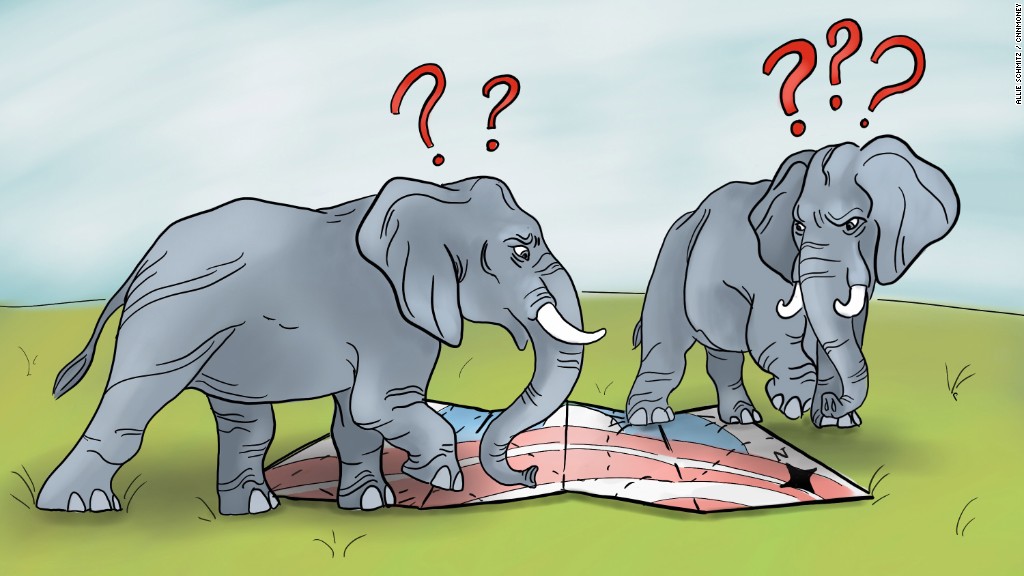
The nation's uninsured rate has fallen to a historic low under Obamacare, but you'd never know that listening to Republican leaders speak.
Bracing for a harsh assessment of their Obamacare repeal bill, House GOP leadership and the Trump administration are attacking the accuracy of the congressional agency tasked with reviewing it.
Now, the nonpartisan Congressional Budget Office is expected to report, as soon as Monday, that millions of Americans could lose coverage under the Republican bill. And the GOP is likely to continue pushing back against the CBO.
Here's the thing: Republicans are right that the CBO misjudged how many people would be insured through the Obamacare exchanges. But the agency was much closer to the mark on Obamacare's overall impact on coverage.
Related: What CBO got right - and wrong
This is backed up by reports from several agencies and organizations that have looked at what actually did happen after the sweeping health reform law was enacted in 2010. They all found unprecedented drops in the uninsured rate among non-elderly Americans. (Nearly all senior citizens are covered through Medicare.)
The uninsured rate for those under age 65 plummeted to 10.3% in the first nine months of 2016, according to data from the Centers for Disease Control and Prevention. That's the lowest share since the agency began tracking 45 years ago.
In 2010, the rate hit an all-time high of 18.2% before drifting down to 16.6% in 2013, the year before the exchanges and Medicaid expansion went into effect.
CBO projected that about 8% to 10% of non-elderly Americans would be uninsured in its early reports.
Only 28 million people were uninsured last year, compared to just over 48 million in 2010.
"There has never been a decline this large and over such a short period of time," said Rachel Garfield, associate director for the Kaiser Family Foundation's Program on Medicaid and the Uninsured.

Some of the drop is due to the improving economy, leading more people to secure jobs that provided health benefits. But most of it can be traced to millions gaining coverage thanks to Obamacare, she said.
Before the Affordable Care Act, most of the uninsured were low-income and either couldn't afford coverage or didn't have access to it. The health reform law provided generous subsidies for these folks to buy policies on the individual exchanges or enabled them to sign up for Medicaid in the 31 states that agreed to expand. Also, it allowed many young adults to stay on their parents' plans until age 26.
Related: Breitbart calls Price's health care vow 'lie of the year?'
Other surveys back up the CDC data, which is considered the gold standard. The most recent Census Bureau data shows that the uninsured rate for all Americans fell to 9.1% in 2015, down from 13.3% in 2013.
And the Gallup-Healthways Well-Being Index found that only 10.9% of American adults were uninsured in the final quarter of last year, compared to a high of 18% in the third quarter of 2013. The results are based on interview with more than 40,000 people.
Allowing kids to remain on their parents' plans and expanding Medicaid both had noticeable impacts on the uninsured rate, said Dan Witters, the index's research director.
Related: What's inside the Republican health care bill?
The GOP bill would keep the first provision, but it would end enhanced federal support for Medicaid starting in 2020 and would curtail federal funding for the entire program. Also, it would replace Obamacare subsidies, which are based on income and cost of coverage, with refundable tax credits based mainly on age.
These changes would likely render coverage unaffordable for millions of Americans, experts say.


